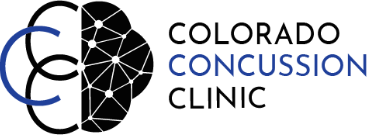Concussion is a hot topic these days, and with that comes a lot of misinformation. With concussions getting so much attention in the media, there are a lot of providers jumping on board and saying that they treat concussions. This can be misleading and even harmful if they do not have the specialized training needed to effectively and efficiently manage these injuries.
Since it can be so confusing to know what to believe, we are going to dive into some of the most common myths, misconceptions, and misinformation that are out there about concussions!
Myth: Rest is the best treatment for concussion: We hear this ALL the time. So many of our patients have been told to just rest until symptoms go away. This is NOT the best treatment and can actually make symptoms worse and prolong recovery! Current research supports a 2-3 day period of rest immediately following the injury, followed by increased cognitive and physical activity. This activity should be symptom limited meaning it should not make symptoms worse. If you have been told to just rest, it’s time to find a new provider to help you along your concussion recovery journey!
Myth: Staying in a dark room until symptoms subside is the best treatment for a concussion: This goes along with rest. The thought behind the dark room is avoiding light, noise, and social interactions to decrease symptoms while recovering. The problem with this is that deprivation of all of this stimuli can actually make the symptoms worse in the long run and prolong recovery! Again, a 2-3 day period of rest and reduced stimulation followed by gradual return to activity is considered the best treatment for concussion.
Myth: You must hit your head to sustain a concussion: You can absolutely sustain a concussion from direct impact to the head. However, this is not the only way! The mechanism of a concussive injury is acceleration/deceleration of the brain inside the skull, which can be caused by direct force to the head. Other potential causes of concussion are whiplash (head whipping forward/backward), body checking in sports, tackling, and falling. Any of these, with enough force, can cause a concussion without any impact to the head.
Myth: If you do not lose consciousness, it’s not a concussion: Nope, not true! Again, the mechanism of injury for a concussion is acceleration and deceleration of the brain inside the skull, and this can happen without losing consciousness.
Myth: Helmets prevent concussions: Even though helmets are really important, they do not protect against concussions! As we’ve mentioned already, concussions are not only caused by head trauma, but also by the acceleration and deceleration of the brain inside the skull. Since a helmet cannot stop the movement of the brain, it will not protect against a concussion. That being said, helmets are important for protecting against more severe brain injuries and skull fractures. Helmets save lives, so we are certainly huge advocates of wearing them.
Myth: Exercise is detrimental in the acute phase of a concussion: The research in this area is growing, and more studies are finding that exercise in the acute phase of a concussion is actually beneficial to recovery. It’s really important that this exercise does not make symptoms worse. If you have some symptoms before you start, such as a headache or mild dizziness, and these symptoms get worse, the intensity is too much. You want to aim for exercising at a level that you can maintain without increasing symptoms. Physical therapists and athletic trainers trained in concussion management can administer a treadmill test to help determine the appropriate exercise intensity and guide your return to safe physical activity.
Myth: One provider can treat all needs following a concussion: There are so many systems impacted and symptoms caused by concussions, and it takes a multidisciplinary team for effective, comprehensive treatment. This team can include MDs, neurologists, physical therapists, cognitive therapists, optometrists, psychologists, and the list goes on! Not every person will require all of this therapy, and their care team should be individualized to their needs. Be skeptical if a provider is claiming they can treat all of your concussion needs!
Myth: Treatment of dizziness requires treatment of the vestibular system only: The vestibular system plays a huge role in dizziness and balance, and it is frequently affected with a concussion. So treatment of the vestibular system is really important in traumatic brain injury. HOWEVER. There are multiple systems involved in dizziness that can be impacted following an injury. Dizziness can be coming from the vestibular system, as well as the visual system, the neck, and blood flow/autonomic nervous system regulation. Any or all of these systems can be involved in dizziness. A thorough concussion evaluation should involve testing of all 4 of these areas to identify the impairments contributing to dizziness. This is essential for developing an effective and comprehensive individualized treatment program.
Myth: Symptoms are present immediately after an injury: People can have an immediate onset of symptoms following an injury. However, there is a neurometabolic cascade (fancy term for what’s happening at the cellular level) that happens after a concussive injury that can cause a delayed onset of symptoms. What does this mean? A person can sustain an impact and feel fine immediately. They may not become symptomatic until a few hours or even a day or two later. After an impact to the head OR body, it’s important to be on the lookout for symptoms of a concussion that may develop up to a day or two later.
These are some of the most common myths that patients hear regarding their injuries. Our goal at Colorado Concussion Clinic is to provide the most up to date and evidence-based concussion care, as well as educate patients and providers on the current best care for mild traumatic brain injuries. Getting the right information following an injury can contribute to a more timely recovery - a win for everyone involved!
- Kate Smulligan

